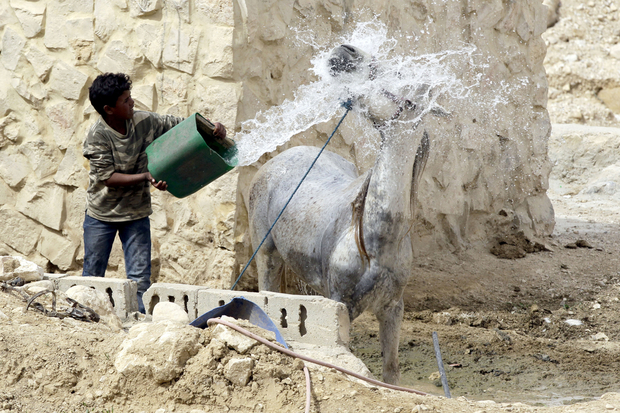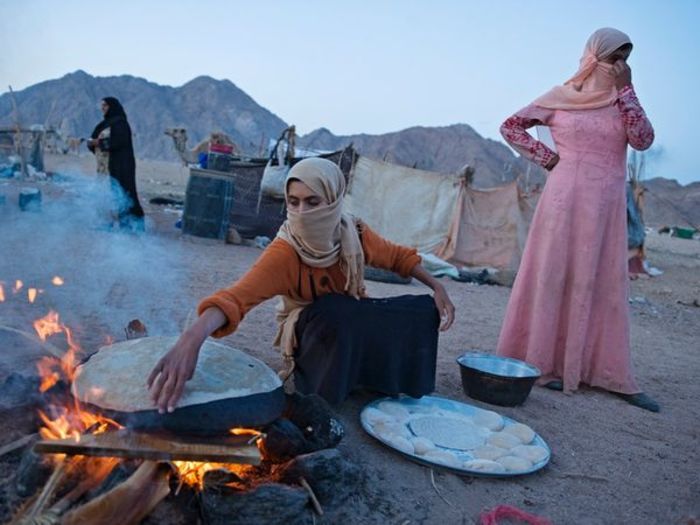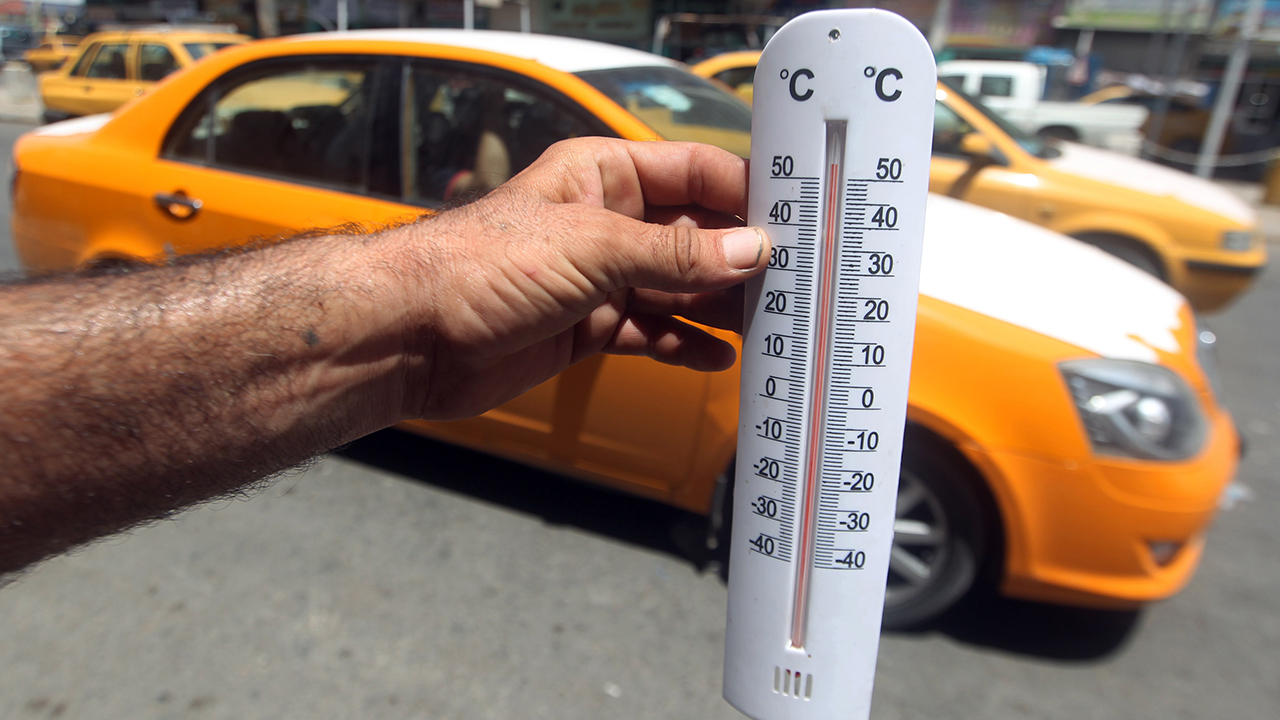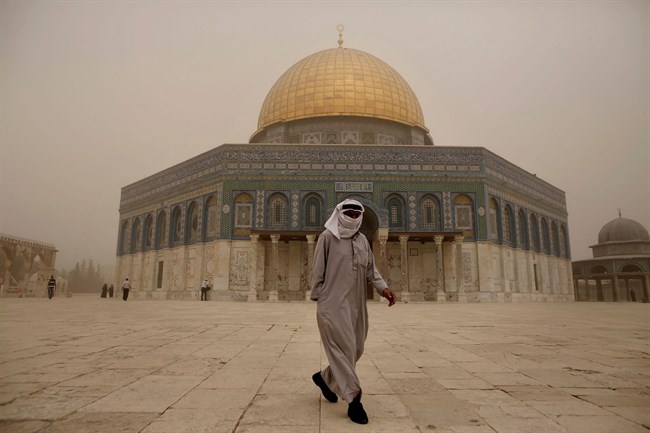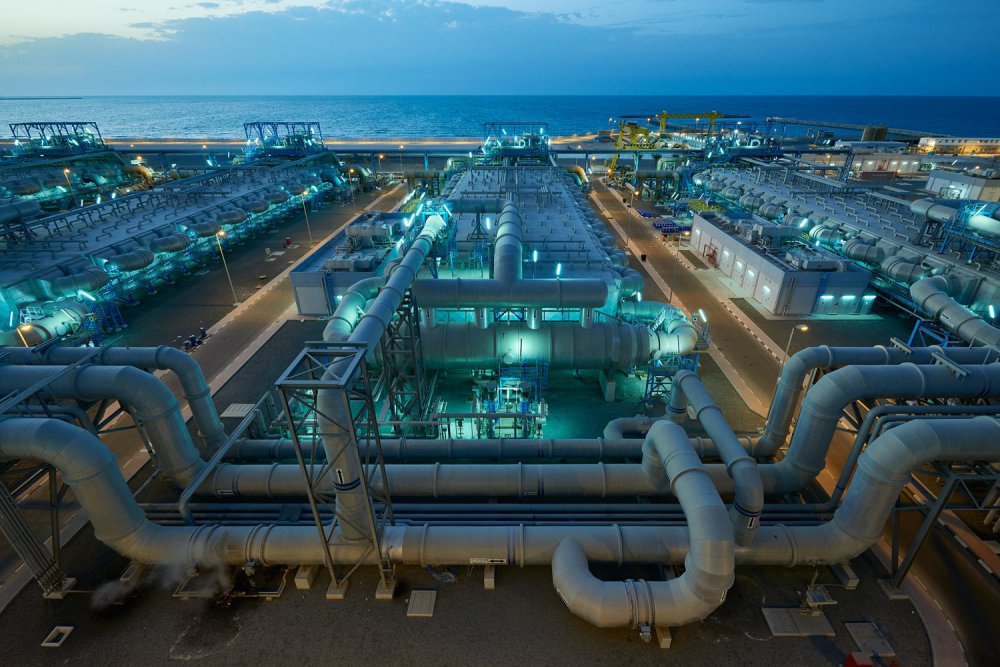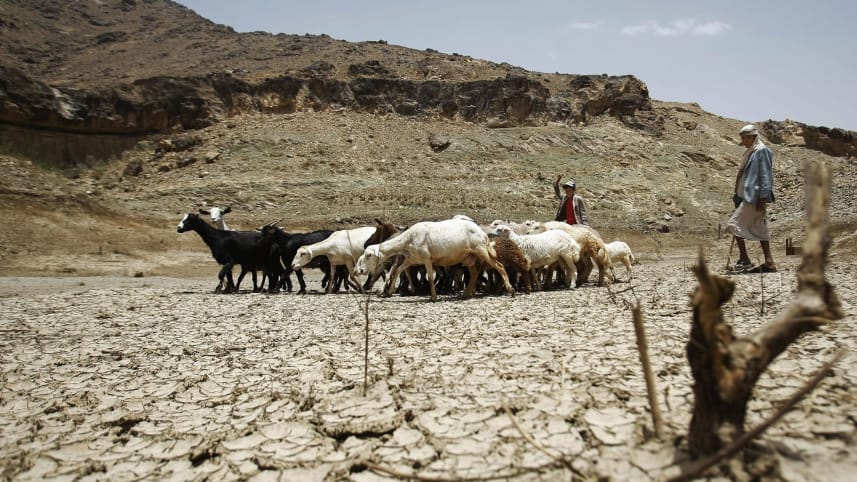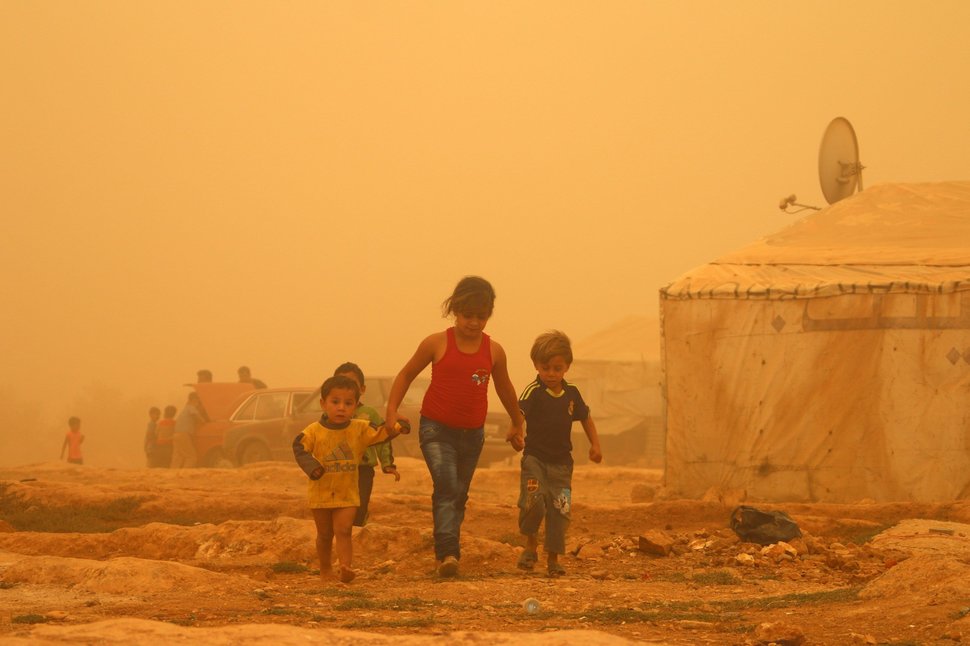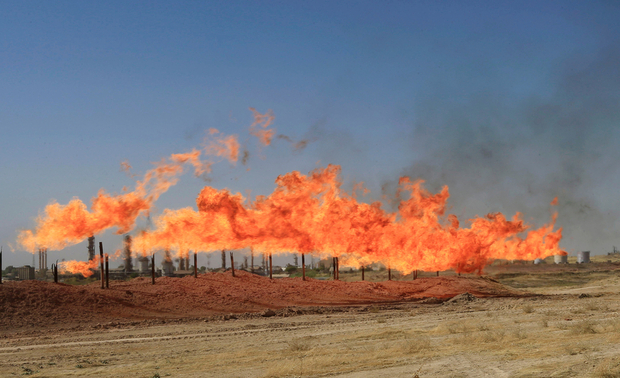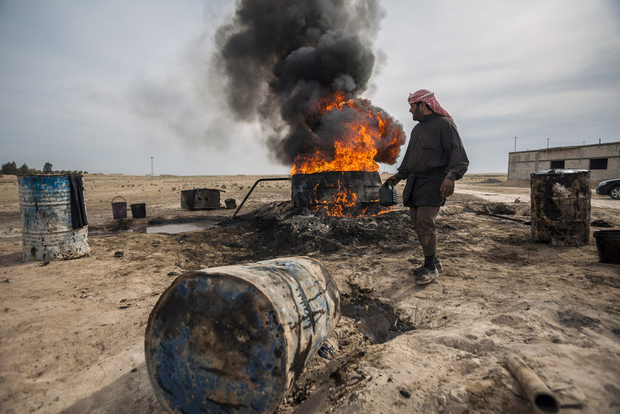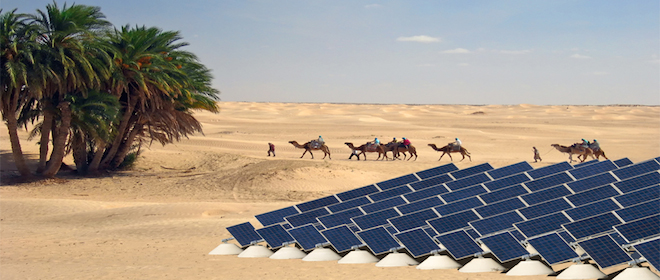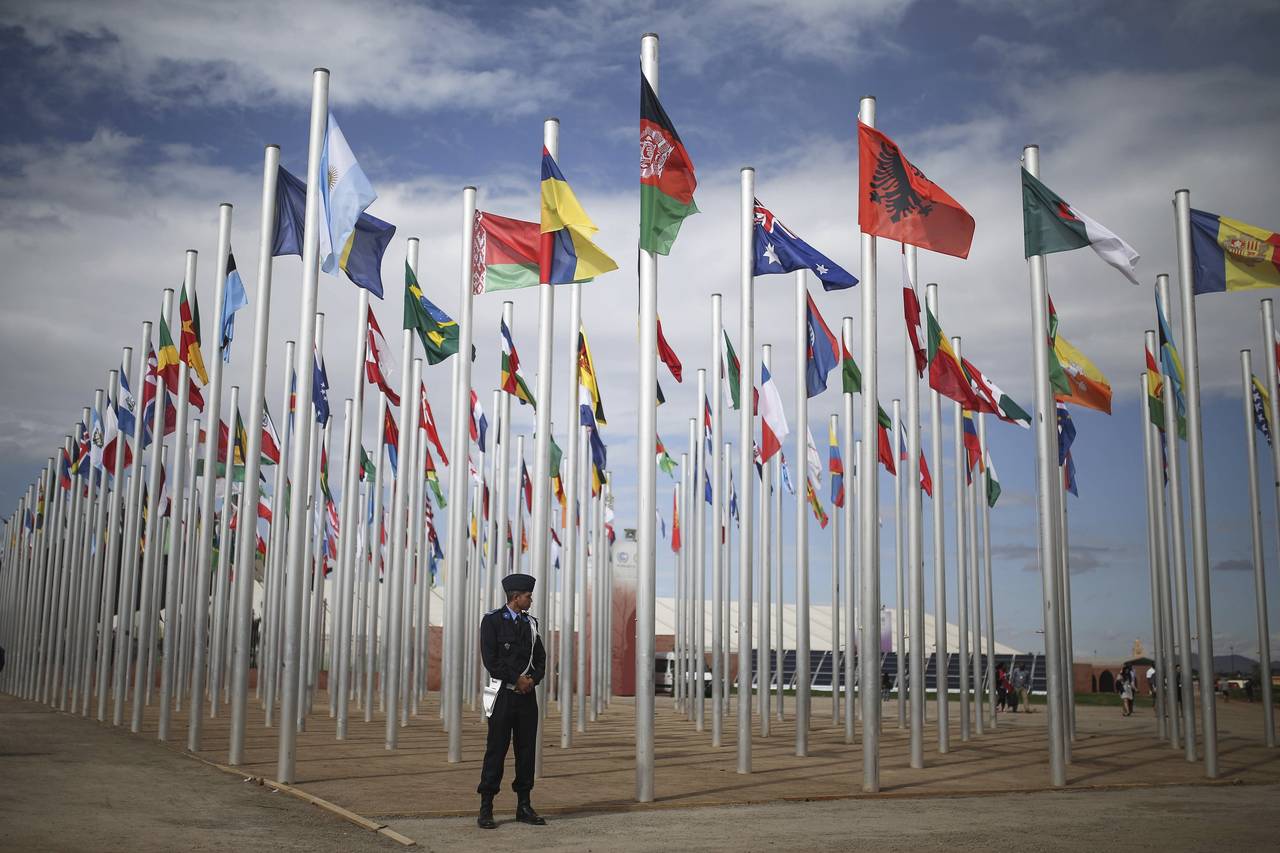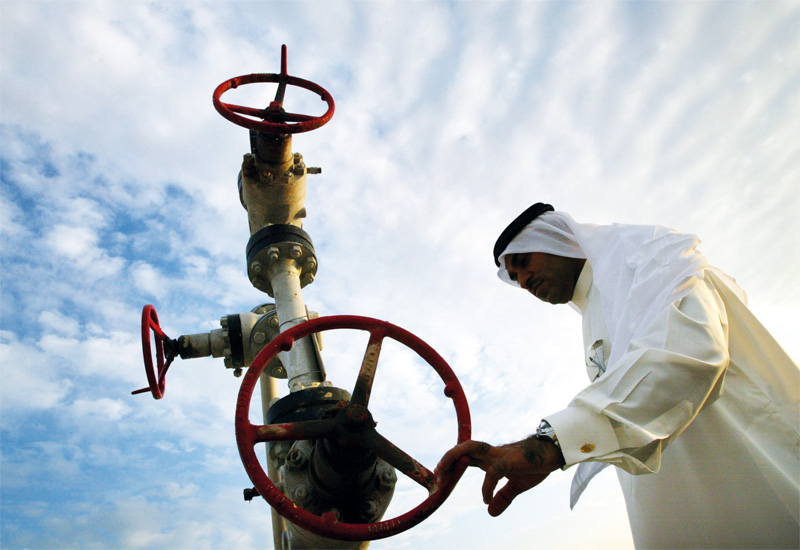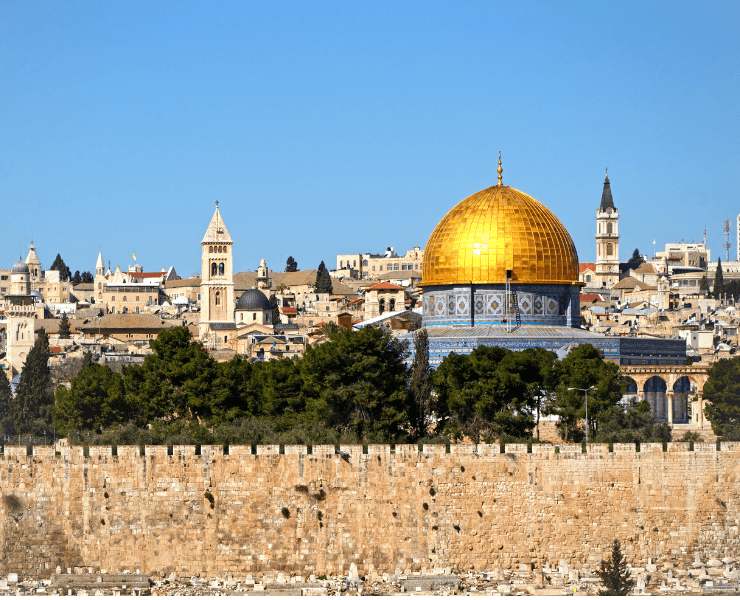It’s no surprise the Middle East and North Africa are among the hottest regions on earth, but what many don’t realise is that rising temperatures and resource shortages caused by climate change could soon make the deserts of Arabia totally uninhabitable.
According to scientists, the entire MENA region is susceptible to some of the severest consequences of global warming, including deadly heat waves, droughts and rising sea levels.
This is having a drastic impact on people’s lifestyles, as life without air conditioning becomes increasingly uncomfortable and agriculture in certain areas has become impossible. According to the UN’s Environment Programme, the harsh climate claims an estimated 230,000 lives every year in the Arabian Peninsula and the Fertile Crescent.
 A man helps his horse cool off in Petra, Jordan (image: Middle East Eye)
A man helps his horse cool off in Petra, Jordan (image: Middle East Eye)
For centuries, the region has been home to communities of Bedouin, who live in tents outdoors and move around with their livestock. Rising temperatures and depleting resources are making such a lifestyle increasingly difficult.
 Bedouins in Egypt. Bedouin communities will likely face the harshest consequences of climate change and resource shortages in the region (image: StepFeed)
Bedouins in Egypt. Bedouin communities will likely face the harshest consequences of climate change and resource shortages in the region (image: StepFeed)
On an even more worrying level, in a region already suffering the effects of war and political instability, increased pressure on crops and already scarce water resources could lead to even greater levels of migration and a heightened risk of conflict.
Even Jabhat Fateh al-Sham (Al-Qaeda’s affiliate in Syria) recognises that there’s a problem and is preaching the benefits of solar energy.
Rapidly rising temperatures will make areas unliveable and increase the pressure to migrate.
According to the World Bank, most capital cities in the Middle East are likely to face four months of exceedingly hot days every year. Researchers also found that even limiting global warming to less than two degrees – the target set at the 2016 UN Climate Change Summit in Paris – would not stop the region from overheating, as summer temperatures are increasing at twice the average pace of global warming.
 Children cooling off in Gaza (image: Mashable)
Children cooling off in Gaza (image: Mashable)
Residents of the Gulf in particular are feeling the heat. In July 2016, Kuwait recorded a temperature of 54 degrees Celsius – the highest temperature ever recorded on earth. Meanwhile in Bahrain, the tiny island Kingdom recorded the hottest July for 115 years in 2017.
A 2015 MIT study predicted that the Gulf will be too hot for humans by 2070, when temperatures will surpass 60 degrees Celsius if they continue to increase at their current rate.
As heatwaves and desert dust storms make life in some areas impossible, the pressure to migrate will increase, altering the social and demographic makeup of the region and putting pressure on regional governments to provide for those citizens forced to move.
 Summer temperatures frequently pass 50 degrees in the UAE (image: Gulf Insider)
Summer temperatures frequently pass 50 degrees in the UAE (image: Gulf Insider)
 Construction workers in Dubai struggle with the daily heat (image: Magnum Photos)
Construction workers in Dubai struggle with the daily heat (image: Magnum Photos)
 A man walks past the Al-Aqsa Mosque in Jerusalem during a dust storm (image: Maan News Agency)
A man walks past the Al-Aqsa Mosque in Jerusalem during a dust storm (image: Maan News Agency)
 Smog in Teheran creates health problems for the locals (image: Al Arabiya)
Smog in Teheran creates health problems for the locals (image: Al Arabiya)
The Middle East is the most water scarce region in the world, and pressure on already depleting resources looks set to increase over the coming years as a result of rapid population growth and urbanisation.
According to the World Bank, water availability in the region is around six times less than the worldwide average, and water availability per capita is expected to half in the region by 2050 as temperatures increase and rainfall declines.
Most MENA countries struggle to sustainably meet their current water demand, with many relying on desalination plants, which are both costly and often environmentally unfriendly. Over 75% of desalination worldwide takes place in the Middle East and North Africa, which is home to just 6% of the world’s population.
Despite this scarcity, the GCC states in particular have some of the highest per capita water consumption rates in the world. A 2015 World Bank report stated that Saudi Arabia uses 943% of its available renewable water reserves; In Kuwait, that figure is a staggering 2,465%.
 The Jebel Ali desalination plant in the UAE is one of the largest in the world (image: Phlebas)
The Jebel Ali desalination plant in the UAE is one of the largest in the world (image: Phlebas)
As regional populations continue to grow and urbanisation continues, competition over water resources will increase.
Rural communities reliant on rainwater for agriculture will inevitably be hit hardest, as will poorer countries like Yemen, which is already struggling with internal conflict and cannot afford to invest millions in desalination. Yemen has battled with water scarcity for many years and Sana’a is expected to become the first city in the world to run out of water altogether.
 A Yemeni farmer leads his animals across drought-stricken land (image: Haaretz)
A Yemeni farmer leads his animals across drought-stricken land (image: Haaretz)
 A man examines his dry land in Raqqa, Syria in 2010 (image: Middle East Eye)
A man examines his dry land in Raqqa, Syria in 2010 (image: Middle East Eye)
 Syrian children battle with a dust storm at a camp for refugees (image: Huffington Post)
Syrian children battle with a dust storm at a camp for refugees (image: Huffington Post)
A man-made problem
The most frustrating thing about the environmental challenges facing the Middle East and North Africa is that they have been exacerbated by human activity in the region.
According to the Economist, over-irrigation has dried up lakes and turned entire seas into dustbowls. The Dead Sea, for example, is shrinking by a metre every year. Meanwhile the oil industry, which has made some regional countries fabulously wealthy, has also harmed local environments by releasing toxic by-products that contribute to air pollution and acid rain.
War has also played its part, forcing rural people from their land and preventing local populations from taking counter-measures such as planting trees and conserving resources.
 An oil field in Kirkuk, Iraq (image: Middle East Eye)
An oil field in Kirkuk, Iraq (image: Middle East Eye)
 While the oil industry has brought wealth to the region, it has also created a pollution problem that local communities are dealing with (image: Syria, Middle East Eye)
While the oil industry has brought wealth to the region, it has also created a pollution problem that local communities are dealing with (image: Syria, Middle East Eye)
In a region hooked on oil and mired in conflict, what can be done to push back against climate change?
The most obvious solution for slowing climate change is to reduce reliance on fossil fuels – though this seems somewhat optimistic in a region that’s home to over half of the world’s known oil reserves. But there are other options…
While rising temperatures are the cause of many environmental problems in the region, this extreme heat could also be the solution. The countries in the Arab World have some of the highest solar and wind energy potentials worldwide. If harnessed, this could significantly reduce the region’s dependence on fossil fuels.
Regional governments – particularly wealthier countries like the Gulf monarchies – should also invest in recycling facilities and awareness raising campaigns encouraging citizens to reduce their carbon footprint.
 Solar panels in Qatar (image: Green Prophet)
Solar panels in Qatar (image: Green Prophet)
Some regional countries have made efforts to combat climate change.
Morocco, for example, has made significant investments in solar power and demonstrated its dedication to fighting global warming when it played host to the UN Climate Change conference in 2016. It has set ambitious targets for moving to renewable energy, lifted subsidies on fuel to discourage consumption, improved its management of coastal zones and invested in developing sustainable aquaculture.
Sharjah, a northern emirate of the UAE, has also invested heavily in recycling. By 2015, Sharjah had achieved a 70% recycling rate within just a decade and is on track to become the first place in the region to record zero waste sent to landfill. The emirate is currently building a waste-to-energy plant and an e-recycling plant for electronic waste.
 Morocco hosted the COP22 climate change conference in Marakesh in 2016 (image: Wall Street Journal)
Morocco hosted the COP22 climate change conference in Marakesh in 2016 (image: Wall Street Journal)
But change won’t come easy.
The GCC states are struggling to diversify their economies, which are totally built around and reliant on oil, without creating new challenges for themselves. As they move away from oil, governments find it increasingly difficult to pay off their populations with benefits and public-sector jobs, thus leading to increased demands for political reform.
And on a wider regional level, conflict and political challenges push measures tackling climate change to the bottom of the priorities list, and regional rivalries prevent the cooperation necessary to create widespread, lasting change.
 The oil industry has allowed the GCC states to provide their citizens with financial benefits and public sector jobs (image: Arabian Oil and Gas)
The oil industry has allowed the GCC states to provide their citizens with financial benefits and public sector jobs (image: Arabian Oil and Gas)
Something must be done, and soon, before climate change sparks further conflict in an already divided region and life in the Middle East becomes a thing of the past.
If you found this interesting, you might also like:
13 essential podcasts to help you understand the Middle East
The Silk Roads: History as you’ve never been taught it
5 Instagram accounts that capture the culture of the Middle East
Cover: An Iraqi woman examines her land during a drought (image: NPR)


